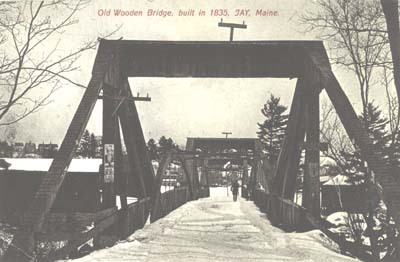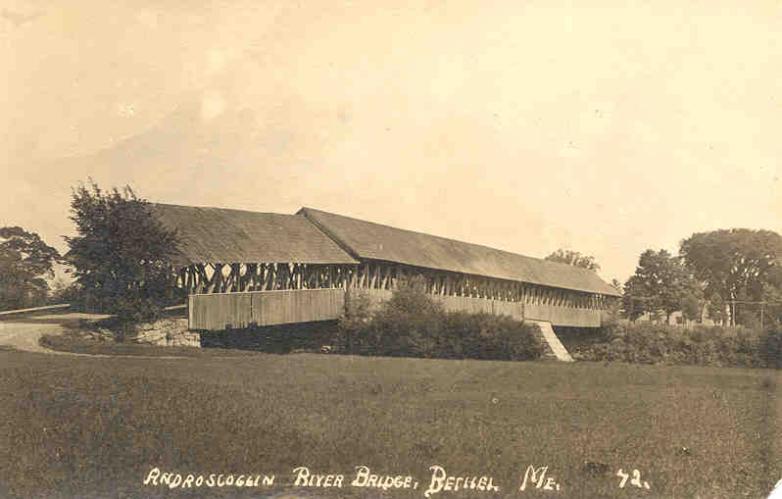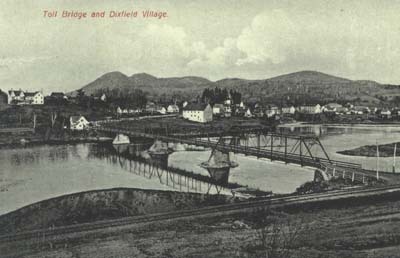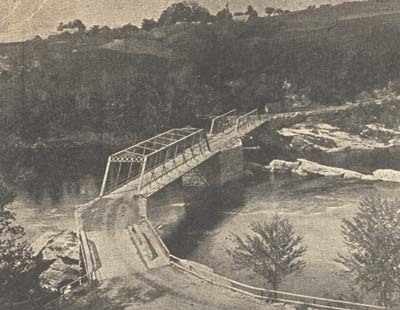Bridging the Androscoggin
Whether built of wood, stone, metal or concrete, bridges over the Androscoggin have long served as vital links between communities separated by the river, or, in the case of Bethel and other towns, connectors between small villages and neighborhoods. The images offered here give an idea of the various types of bridges erected over the Androscoggin since the late 18th and early 19th centuries.
Its open trusses and laminated arches protected from the elements by wooden shingles, this primitive bridge provided access over the Androscoggin at Jay, Maine, for nearly a century. By the time this circa 1905 postcard was issued, the bridge had become a much-photographed local landmark.
Completed in 1869, this three-span, double-lane covered bridge spanned the Androscoggin River at Bethel until it was razed in 1927. Note that the closest span was built at an angle, due to the different heights of the riverbanks.
The "Swinging Bridge" was originally built in 1892 for workers walking over the Androscoggin River from the Topsham Heights neighborhood to Cabot Mill in Brunswick, Maine. The bridge was constructed in 1892 by John A. Roebling's Sons Company, the engineering firm that designed and built the Brooklyn Bridge, among others. In the early 20th century, the present steel towers replaced the original timber-framed towers. A flood destroyed the superstructure of the bridge in 1936, and it was rebuilt in 1938 by the WPA, although the suspension cables date back to 1892 when the bridge was first built. The Towns of Brunswick and Topsham created a joint committee to repair the bridge in 2000 and this renovation was completed in early 2007.
This four-span iron toll bridge opened in 1895 between the towns of Mexico and Peru, Maine, and replaced a ferry that had long operated at this location. The West Peru railroad station (1892) was located just out of the picture on the right.
The massive stone piers supporting this bridge below Lisbon Falls were designed to withstand the Androscoggin's strong currents and the pounding of huge chunks of ice during the winter. Nevertheless, extremely high water during the flood of March 1936 destroyed this crossing, which was just below the Worumbo Manufacturing Company (see above).





